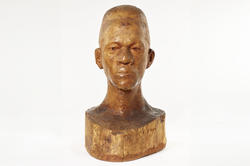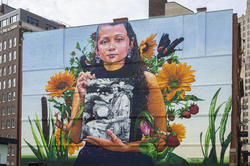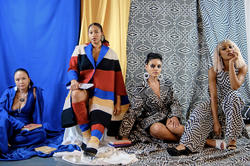Sculptures, watercolors and more by Prophet, one of the first known women of color to graduate from RISD, are on view through August 4.
Visiting Indigenous Artist Mikayla Patton Makes Work Exploring Healing, Growth and Renewal
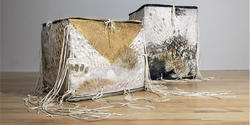
Mixed-media artist Mikayla Patton (Oglala Lakota) turns recycled materials into potent sculptural objects that explore her Indigenous heritage and reflect on her personal experiences. The latest speaker in the Indigenous and First Nations Artist Lecture Series organized by Social Equity & Inclusion at RISD, Patton visited campus in April, toured the Indigenous collection of the RISD Museum, met with graduate students in the Sculpture department and presented a talk about her evolving practice.
She grew up on the Pine Ridge Reservation in South Dakota, where she was immersed in the stories of her people and inspired by her great-grandmother. Wherever she finds herself geographically, she draws strength from her childhood and her culture. “I put my home into my work—even into the materials I use, like sweetgrass collected on the reservation—so I can keep home in my mind,” she says.
She began her creative journey studying papermaking and printmaking at the Institute of American Indian Arts in Santa Fe, NM. There she was able to participate in beading circles and other communal activities that focused on sustainability, healing, growth and renewal. “My great-grandmother was forced to go to boarding school,” she says. “For me, education is an option, an option that matters.”
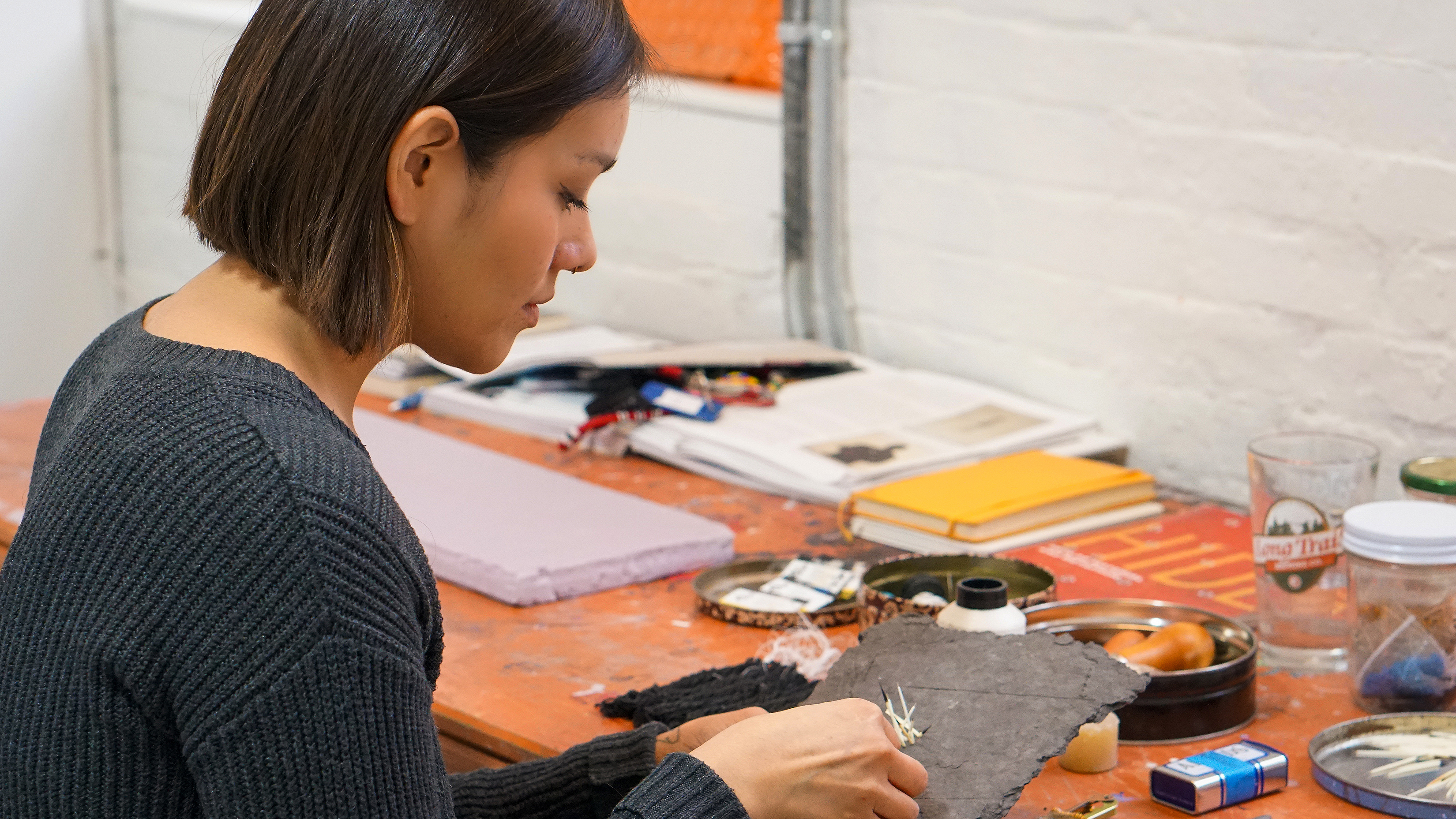
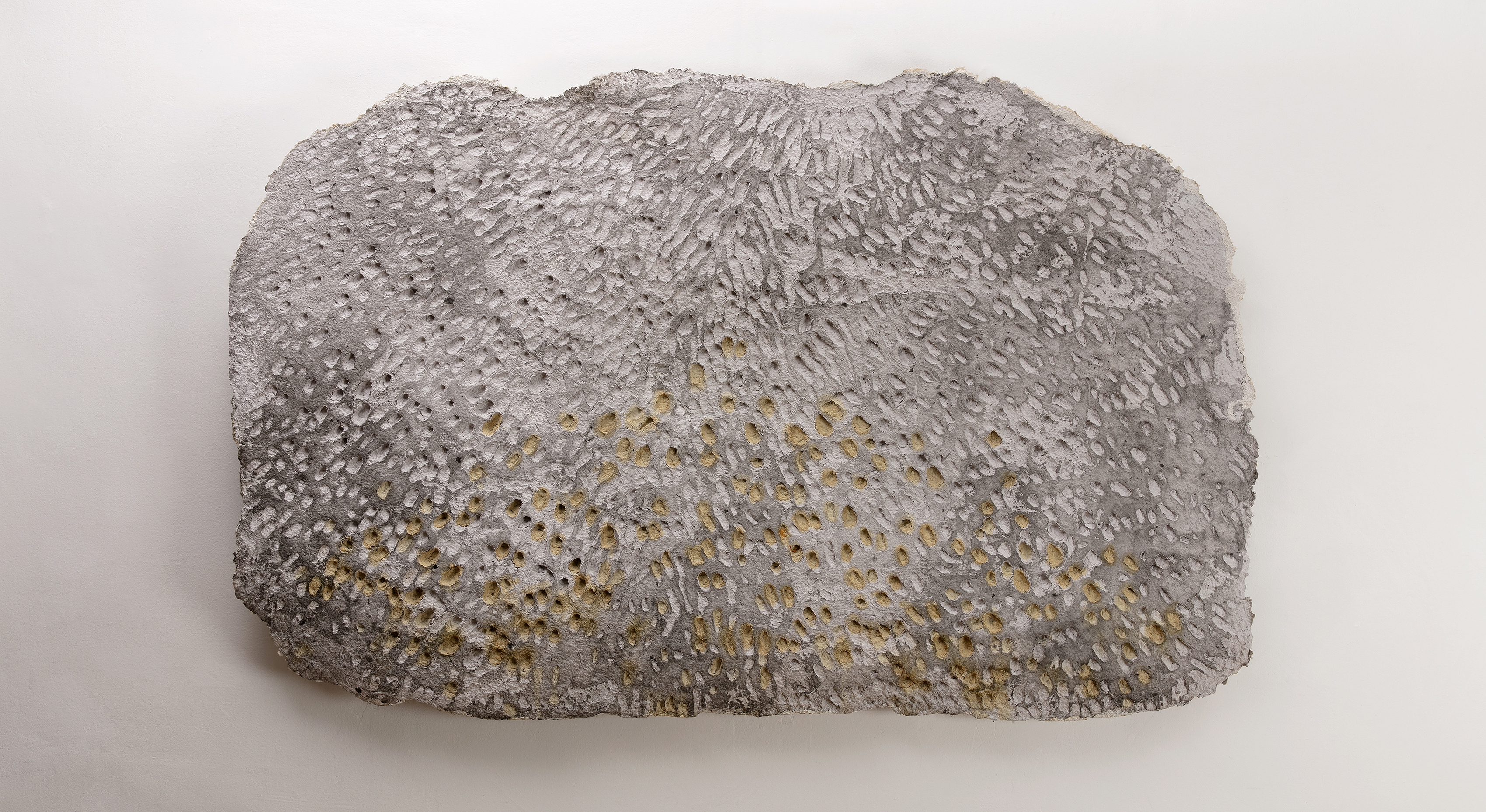
A residency at the Roswell Artist-in-Residence Program in Roswell, NM brought her into contact with Native objects that—like her—seemed to be yearning for home. They surrounded her with their energy. A traditional, beaded Lakota dress similar to one she wore as a baby inspired her to write a kind of poem to the dress, which she shared during her talk.
“Takúya, please remember that you are not from the past. You are current and rooted in generations of knowledge. Your fringe hangs tight to stories, tribal history, cosmology, our people and me.”
In her own work, Patton began to add symbolic materials into her paper pulp, including sage, sweetgrass, beeswax, ash and tobacco. She used a laser cutter to etch her own symbols into the paper, finding inspiration in Native motifs and geometric language.
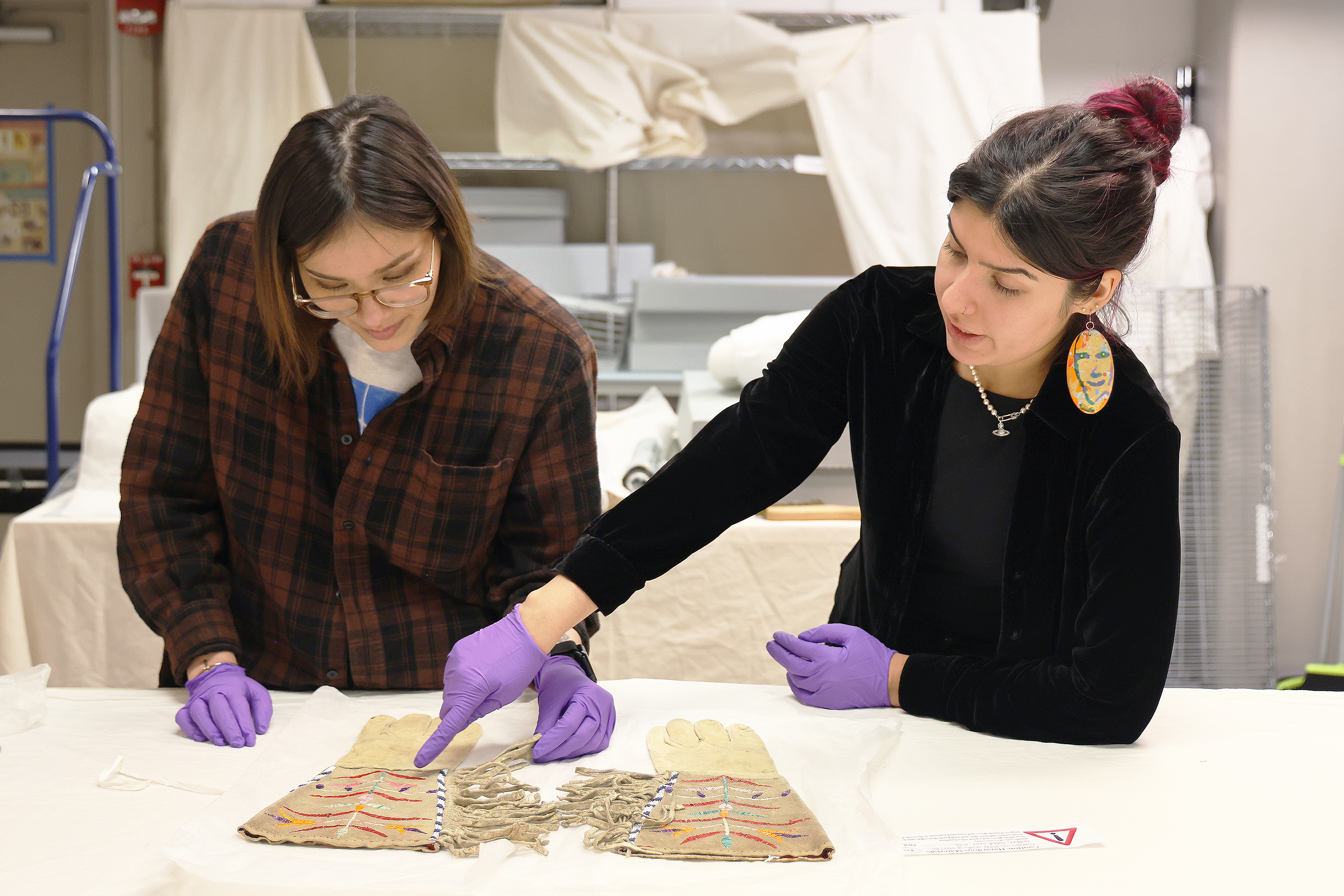
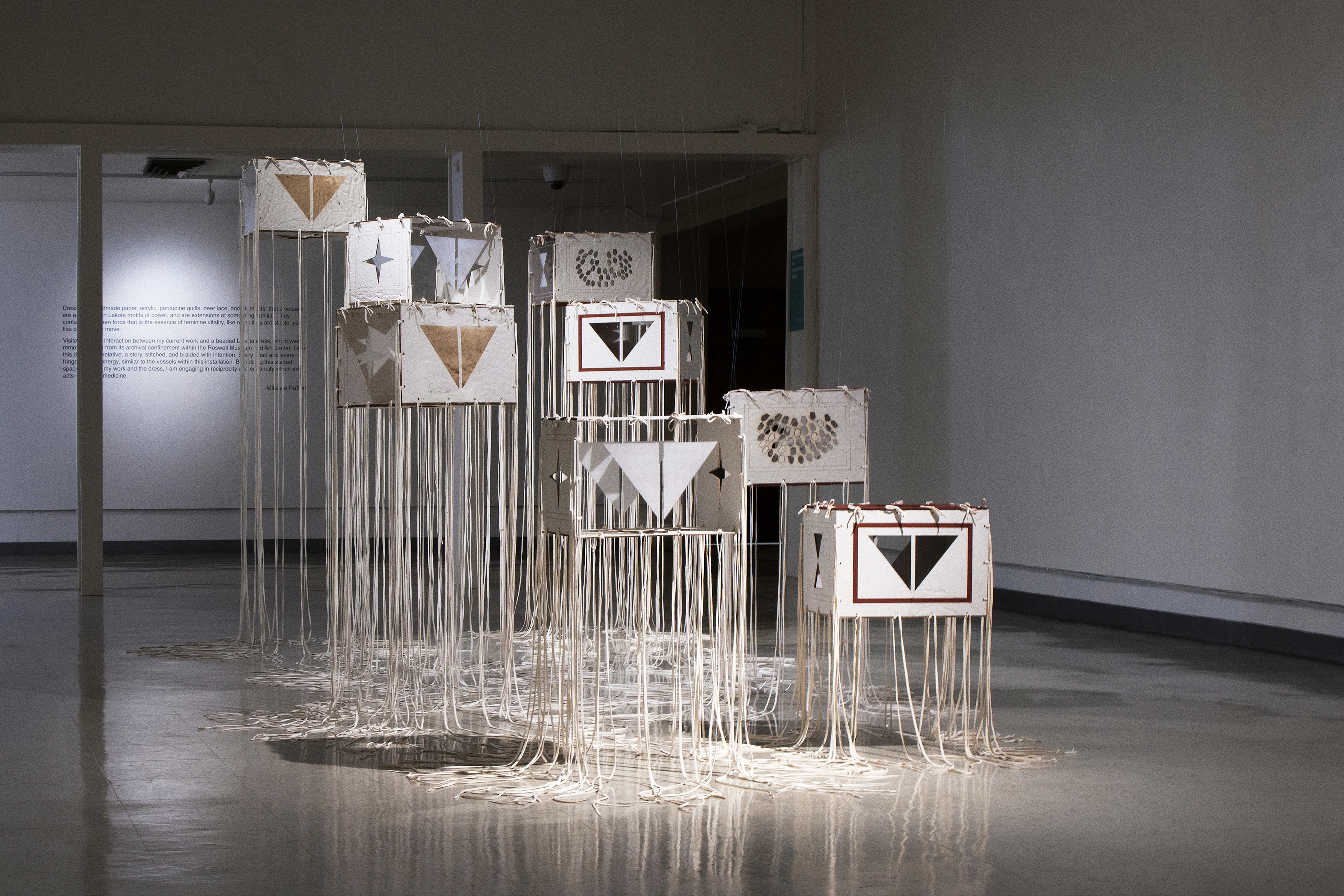
From there, she moved from 2D to 3D, creating vessels out of thick layers of paper stitched together with deer leather lacing. The pieces bore abstract maps seen in dreams and harked back to the rawhide “traveling trunks” Native peoples carried as they moved across the planes. She also experimented with glass beads, porcupine quills and dyes reflecting on traditional Lakota adornment practices.
Patton’s work continues to earn recognition and support from such organizations as the Native Arts and Cultures Foundation, the First Peoples Fund, the Vermont Studio Center and the Judy Pfaff Foundation. Even as her work evolves, it remains grounded in materiality, femme-rooted making practices and Indigenous heritage.
And just as her people use every part of the animals they hunt, Patton wastes nothing, using studio scraps and recycled paper (which her mother shreds for her) and “breathing new life into the repurposed materials. Where I come from,” she says, “everything gets used.”
Watch Patton’s lecture on Youtube.
Simone Solondz / top image: On the Back Road (2023)
April 25, 2024
